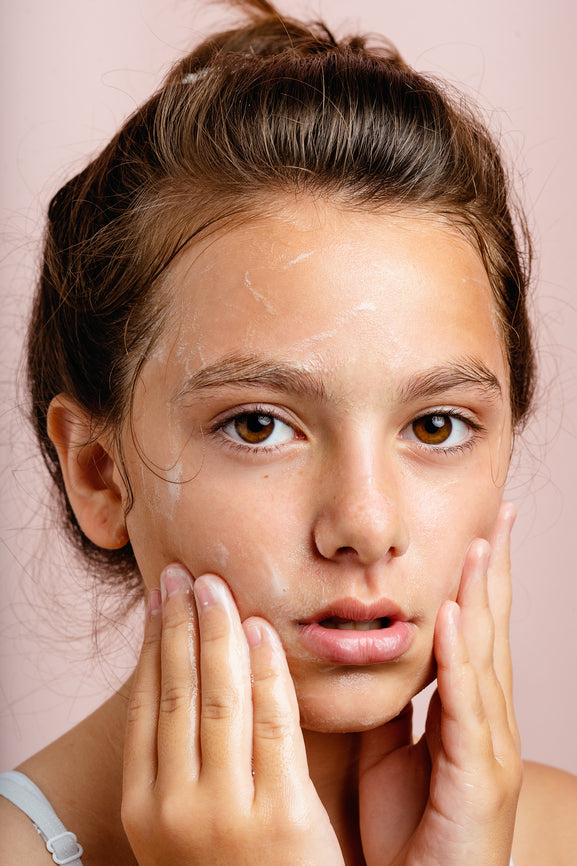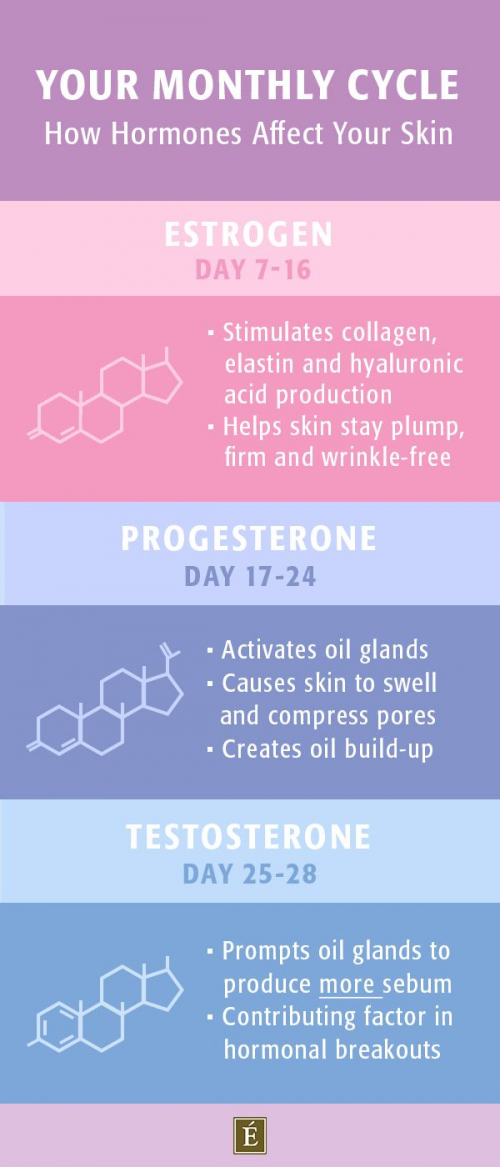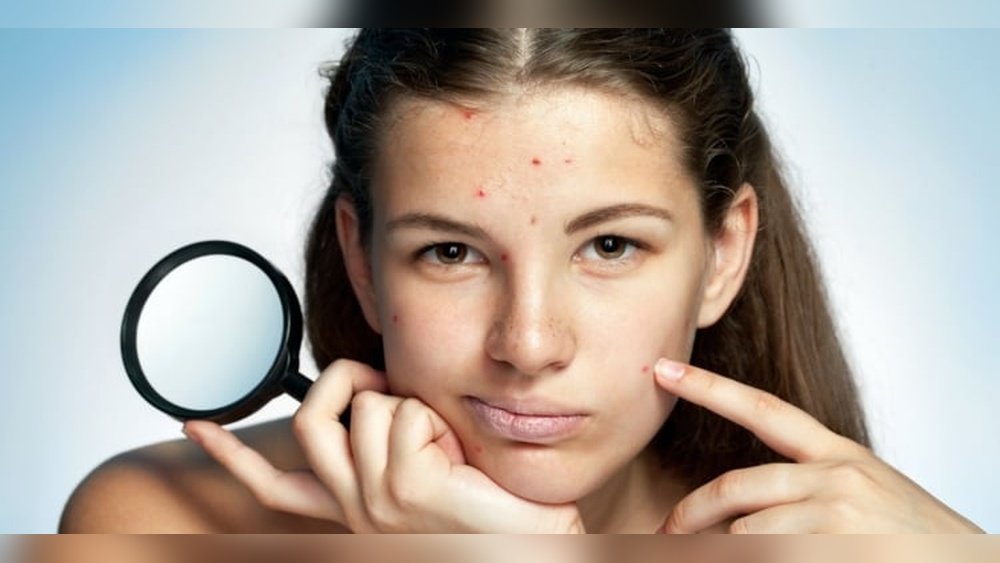Have you ever noticed your skin acting up at certain times of the month? You’re not imagining things—your facial skin actually changes throughout your menstrual cycle.
These shifts happen because of hormones like estrogen, progesterone, and testosterone rising and falling inside your body. You might experience more oiliness, unexpected breakouts, dryness, or even puffiness, and these changes can feel frustrating or confusing. But understanding why your skin reacts this way gives you the power to manage it better.
Keep reading to discover how your hormones affect your skin, what changes to expect during your cycle, and simple steps you can take to keep your complexion glowing all month long.
Hormones And Skin Changes
Hormonal changes throughout the menstrual cycle have a direct effect on the skin. These shifts influence oil production, hydration, and even skin sensitivity. Understanding how hormones impact your skin helps explain common changes like breakouts or dryness. Each hormone plays a unique role in these skin variations.
Role Of Estrogen
Estrogen improves skin texture and thickness. It helps keep skin smooth and hydrated. This hormone reduces oil production, making skin less oily. Higher estrogen levels often mean clearer, glowing skin. Estrogen also supports collagen, which keeps skin firm and elastic.
Impact Of Progesterone
Progesterone increases oil production in the skin. This can lead to oilier skin and clogged pores. Many women experience more breakouts when progesterone rises. It can also cause skin to feel thicker or swollen. This hormone peaks after ovulation and before menstruation.
Testosterone Effects
Testosterone raises sebum production and skin sensitivity. It can trigger acne, especially around the jawline and chin. Higher testosterone levels make skin prone to inflammation. This hormone affects both men and women but fluctuates during the menstrual cycle. Managing testosterone effects helps reduce hormonal acne.

Credit: drzenovia.com
Skin Variations Across Cycle
Skin changes naturally during the menstrual cycle due to hormone shifts. These changes affect oil production, moisture levels, and skin texture. Understanding these variations helps manage your skincare better. Each phase of the cycle brings different skin reactions. Pay attention to these patterns to keep your skin healthy and balanced.
Breakouts And Oiliness
Hormones like progesterone increase oil production before your period. Excess oil can clog pores and cause breakouts. Acne often appears along the jawline and chin. This phase usually lasts a few days before menstruation. Using gentle cleansers and non-comedogenic products can help control oiliness.
Puffiness And Swelling
Water retention causes puffiness, especially in the luteal phase. The face may look swollen or rounder than usual. This effect is temporary and reduces after your period starts. Reducing salt intake and staying hydrated can minimize swelling. Light facial massage may also ease puffiness.
Dryness And Sensitivity
Low estrogen levels during menstruation cause dryness and sensitivity. Skin may feel tight, rough, or irritated. Avoid harsh skincare products that strip moisture. Use gentle, hydrating formulas to soothe the skin. Applying moisturizer regularly supports the skin barrier during this phase.
Skin Tone Fluctuations
Hormones can subtly affect skin tone during the cycle. Some women notice a brighter complexion near ovulation. Changes in blood flow and oil levels may cause this glow. Dark spots or redness might seem more noticeable at other times. Consistent sun protection helps maintain even skin tone year-round.
Cycle Phases And Skin
The menstrual cycle causes noticeable changes in facial skin. Hormones rise and fall, affecting skin texture, oiliness, and glow. Each phase of the cycle brings unique skin characteristics. Understanding these phases helps manage skin health effectively.
Follicular Phase Skin
The follicular phase starts after menstruation and lasts about two weeks. Estrogen rises, improving skin hydration and elasticity. Skin feels smooth and looks fresh. Oil production is balanced, reducing acne risk. This phase offers a good time for skin treatments and exfoliation.
Ovulatory Phase Glow
Ovulation occurs mid-cycle and brings a natural skin glow. High estrogen and testosterone increase collagen and oil, giving skin a plump, radiant look. Pores may appear smaller and skin tone evens out. This phase often results in the healthiest and most attractive skin.
Luteal Phase Challenges
The luteal phase follows ovulation and lasts until menstruation. Progesterone rises, boosting oil production and causing clogged pores. Acne and breakouts are common. Skin may feel oily and sensitive. Water retention can cause puffiness and dullness. Gentle skincare helps soothe skin during this phase.
Menstrual Phase Effects
The menstrual phase marks the cycle’s start with hormone levels at their lowest. Skin can become dry, flaky, or sensitive. Inflammation may increase, leading to redness or irritation. Hydration and calming skincare products support skin recovery. This phase demands extra care and gentleness for troubled skin.

Credit: eminenceorganics.com
Effective Skincare Tips
Effective skincare is essential to manage hormonal facial skin changes during your cycle. Hormones can cause oiliness, dryness, or breakouts. A tailored skincare routine helps keep your skin balanced and comfortable. Focus on hydration, gentle cleansing, and soothing ingredients to reduce irritation and maintain healthy skin.
Hydration Strategies
Hydrating your skin supports its natural barrier and reduces dryness. Use a lightweight moisturizer that suits your skin type. Drink plenty of water throughout the day to keep skin hydrated from within. Consider using a hydrating serum with ingredients like hyaluronic acid. Avoid heavy creams that can clog pores during oily phases.
Gentle Cleansing
Choose a mild cleanser that removes dirt without stripping natural oils. Cleanse your face twice daily to prevent buildup of excess oil and impurities. Avoid harsh scrubs or strong detergents that irritate sensitive skin. Use lukewarm water instead of hot water to protect the skin’s moisture. Pat your face dry gently with a soft towel.
Anti-inflammatory Products
Anti-inflammatory ingredients calm redness and reduce breakouts caused by hormones. Look for products with soothing agents like aloe vera, chamomile, or green tea. Niacinamide is effective for reducing inflammation and balancing oil. Avoid products with alcohol or strong fragrances that can worsen irritation. Consistent use helps keep skin calm during hormonal changes.
Lifestyle Adjustments
Hormonal changes during the menstrual cycle often affect the skin. Adjusting daily habits can help manage these changes better. Simple lifestyle changes support healthier, more balanced skin. These habits reduce flare-ups and improve overall skin comfort.
Balanced Diet Choices
Eating a balanced diet supports skin health. Foods rich in vitamins A, C, and E help repair skin. Omega-3 fatty acids reduce inflammation and dryness. Avoiding excessive sugar and fried foods lowers acne risk. Drinking plenty of water keeps skin hydrated and clear.
Exercise Benefits
Regular exercise improves blood flow and skin glow. It helps reduce stress, which can trigger breakouts. Sweating during workouts clears pores naturally. Exercise also balances hormones by lowering cortisol levels. Aim for at least 30 minutes of activity most days.
Stress Management
Stress worsens hormonal skin issues like acne and puffiness. Practicing relaxation techniques calms the mind and body. Meditation, deep breathing, and yoga help lower stress hormones. Good sleep also supports skin repair and hormone balance. Managing stress keeps skin clearer and more radiant.

Credit: eminenceorganics.com
Tracking And Managing Changes
Tracking and managing hormonal facial skin changes during the menstrual cycle helps maintain healthy skin. Understanding your cycle’s impact on your skin allows better care. Monitoring patterns reveals when skin may react or improve. This awareness supports timely adjustments in skincare and habits. Simple tracking can reduce surprises and improve skin comfort.
Cycle Awareness
Knowing your menstrual cycle phases helps predict skin changes. Track your period start and length for accuracy. Many apps simplify cycle logging and symptom notes. Observing skin condition daily identifies patterns linked to hormones. Awareness of when oiliness or dryness occur aids preparation.
Anticipating Skin Fluctuations
Hormone shifts cause typical skin changes at set times. Sebum often increases before your period, leading to breakouts. Skin may become dry or sensitive during menstruation. Puffiness can appear in the days before your period. Expecting these changes reduces stress and improves skin care choices.
Adapting Routine Accordingly
Adjust skincare based on your cycle phase to support skin health. Use gentle cleansers during dry or sensitive times. Incorporate hydrating products to combat dryness early in your period. Apply oil-control treatments when skin becomes oily before menstruation. Modifying your routine keeps skin balanced throughout the month.
Frequently Asked Questions
Does Your Face Change During Your Menstrual Cycle?
Yes, hormonal changes during your menstrual cycle can cause facial oiliness, breakouts, dryness, puffiness, and slight skin tone variations. These shifts are normal and reflect natural hormone fluctuations affecting your skin’s texture and appearance throughout the month.
When Is Your Skin Clearest In Your Cycle?
Your skin is clearest during the follicular phase, right after your period ends. Estrogen levels rise, reducing oil and breakouts.
What Phase Of Your Menstrual Cycle Are You Most Attractive?
You are most attractive during the fertile phase, around ovulation. Estrogen boosts skin glow and facial attractiveness then.
When Is The Best Time In The Menstrual Cycle To Get A Facial?
The best time for a facial is during the follicular phase, right after your period. Skin is clearer and less oily then. Avoid facials before your period when skin may be oily, sensitive, or prone to breakouts due to hormonal changes.
Conclusion
Hormonal changes during the menstrual cycle naturally affect your facial skin. You may notice oiliness, breakouts, dryness, or puffiness at different times. These changes are normal and usually temporary. Simple steps like drinking water and gentle skincare can ease symptoms.
Tracking your cycle helps you understand your skin’s patterns better. Being patient and caring for your skin supports its health throughout the month. Your skin reflects your body’s natural rhythms—listen to it and respond kindly.
 Skip to content
Skip to content 